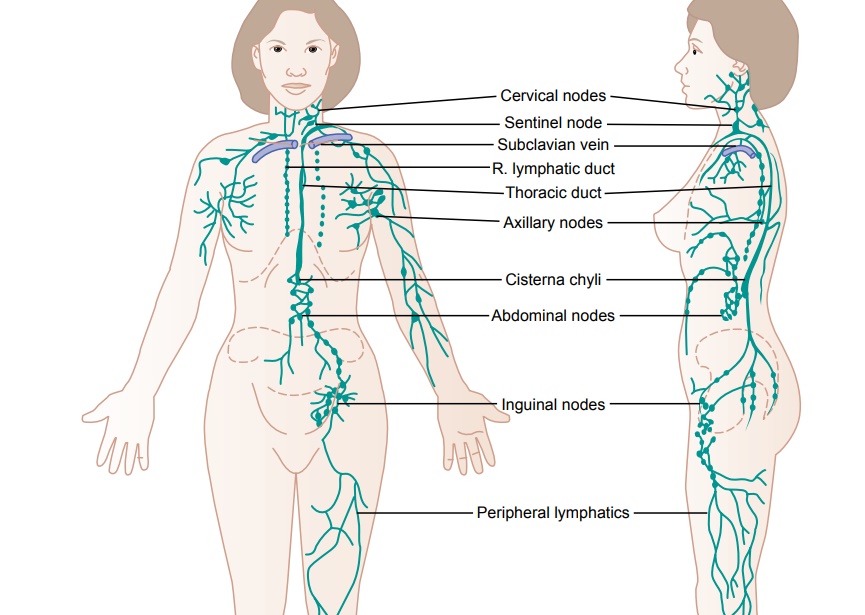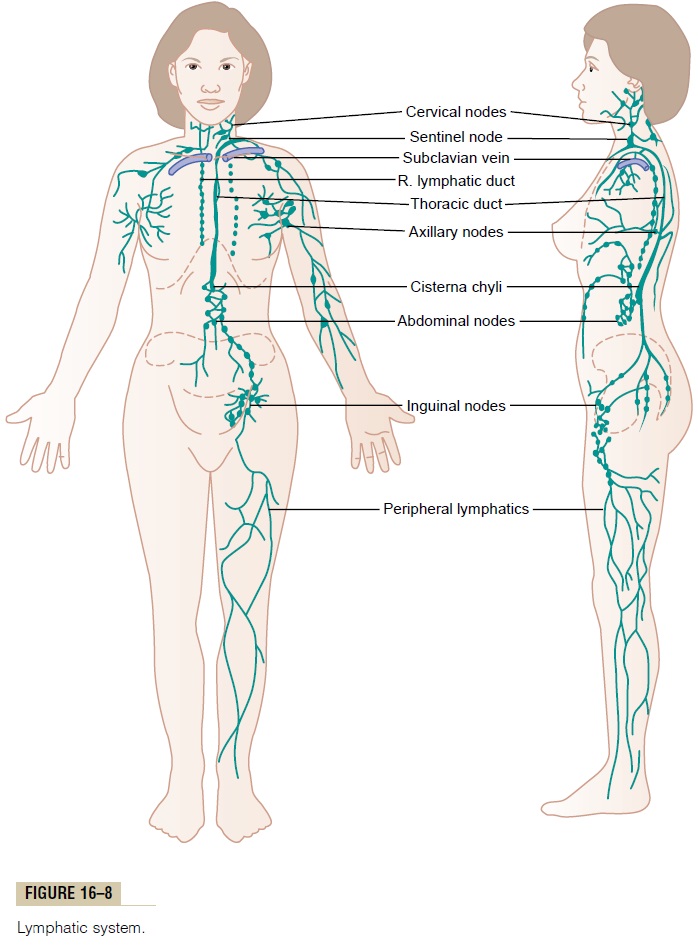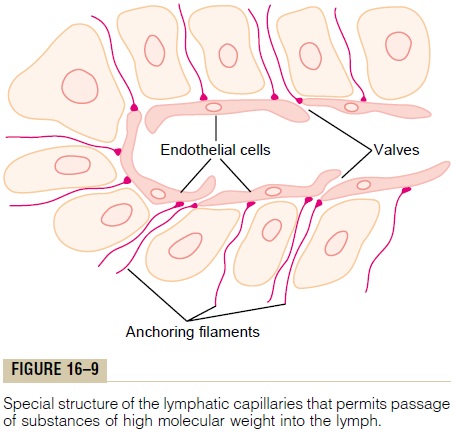Chapter: Medical Physiology: The Microcirculation and the Lymphatic System: Capillary Fluid Exchange, Interstitial Fluid, and Lymph Flow
Lymph Channels of the Body

Lymph Channels of the Body
Almost all tissues of the body have special lymph chan-nels that drain excess fluid directly from the interstitial spaces. The exceptions include the superficial portions of the skin, the central nervous system, the endomysium of muscles, and the bones. But, even these tissues have minute interstitial channels called prelymphatics through which interstitial fluid can flow; this fluid even-tually empties either into lymphatic vessels or, in the case of the brain, into the cerebrospinal fluid and then directly back into the blood.
Essentially all the lymph vessels from the lower part of the body eventually empty into the thoracic duct, which in turn empties into the blood venous system at the juncture of the left internal jugular vein and left sub-clavian vein, as shown in Figure 16–8.

Lymph from the left side of the head, the left arm, and parts of the chest region also enters the thoracic duct before it empties into the veins.
Lymph from the right side of the neck and head, the right arm, and parts of the right thorax enters the rightlymph duct (much smaller than the thoracic duct), whichempties into the blood venous system at the juncture of the right subclavian vein and internal jugular vein.
Terminal Lymphatic Capillaries and Their Permeability. Mostof the fluid filtering from the arterial ends of blood capillaries flows among the cells andfinally is reab-sorbed back into the venous ends of the blood capil-laries; but on the average, about 1/10 of thefluidinstead enters the lymphatic capillaries and returns to the blood through the lymphatic system rather than through the venous capillaries. The total quantity of all this lymph is normally only 2 to 3 liters each day.

The fluid that returns to the circulation by way of the lymphatics is extremely important because sub-stances of high molecular weight, such as proteins, cannot be absorbed from the tissues in any other way, although they can enter the lymphatic capillaries almost unimpeded. The reason for this is a special structure of the lymphatic capillaries, demonstrated in Figure 16–9. This figure shows the endothelial cells of the lymphatic capillary attached by anchoring fila-ments to the surrounding connective tissue. At thejunctions of adjacent endothelial cells, the edge of one endothelial cell overlaps the edge of the adjacent cell in such a way that the overlapping edge is free to flap inward, thus forming a minute valve that opens to the interior of the lymphatic capillary. Interstitial fluid, along with its suspended particles, can push the valve open and flow directly into the lymphatic capillary. But this fluid has difficulty leaving the capillary once it has entered because any backflow closes the flap valve. Thus, the lymphatics have valves at the very tips of the terminal lymphatic capillaries as well as valves along their larger vessels up to the point where they empty into the blood circulation.
Related Topics